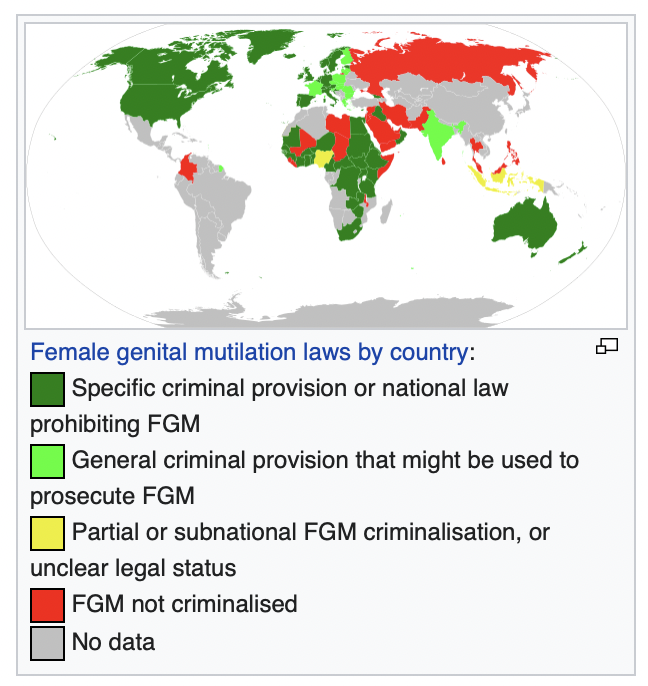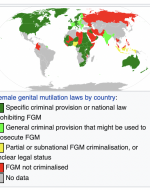Created by Katherine Bobb on Tue, 11/09/2021 - 09:37
Description:
Across the world, medical professionals are having to care for an increasing number of women and female children originating from countries where female genital mutilation (FGM) is practiced. However, many of these medical professionals are lacking knowledge on female genital mutilation and how to care for those affected by it.
Female genital mutilation, also referred to as female genital cutting or female genital mutilation/cutting, is a broad term that refers to all procedures/surgeries involving complete or partial removal of the external female genitalia or other damage done to the female genital organs for non-medical reasons. There are 4 classifications of FGM according to the WHO as of 2007. Type I is a partial or total removal of the clitoris and/or the prepuce; type II is partial or total removal of the clitoris and the labia minora; type III is the narrowing of the vaginal orifice with creation of a covering seal, done by cutting and appositioning the labia minora and/or the labia majora; and type IV is overall unclassified as it covers all other harmful procedures done for non-medical purposes.
FGM/C is a tradition in many countries, holding strong ties to cultural and ethnic identity. In 2008, it was estimated by the WHO that somewhere between 100,000,000 and 140,000,000 women globally have undergone some form of female genital mutilation, and every year close to 3,000,000 female children are mutilated in Africa alone. Many of the countries with the highest prevalence of FGM/C are in Africa (such as Somalia with 97.9% of women and Egypt with 95.8% of women), although data for many other countries with high rates of violence against women have not given official estimates (such as India or the United Arab Emirates).
These procedures come with a number of consequences: immediate, late, and psychological. Extreme pain is horrifically common, even shock or death. Women who have undergone female genital mutilation/cutting are significantly more likely to have adverse obstetric outcomes, and the number only goes up with more extensive types of mutilation, and these affect both the birthing mother and the fetus.
Any form of female genital mutilation/cutting is a complete human rights violation, and many spokespeople are rallying for the laws to change in the countries where it is overwhelmingly present. Women have a human right to psychophysical and sexual health.
Image: “Female Genital Mutilation Laws by Country.” Wikipedia, 5 May 2020.
Information:
Abdulcadir, J, et al. “Care of Women with Female Genital Mutilation/Cutting.” Swiss Medical Weekly, EMH Media, 3 Jan. 2011, https://smw.ch/article/doi/smw.2011.13137.


